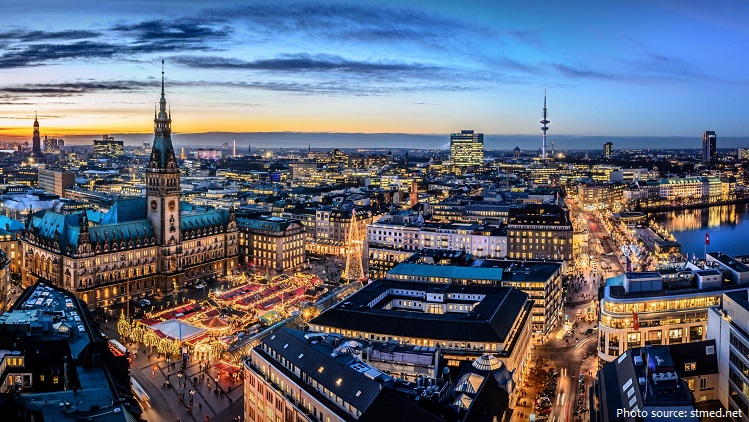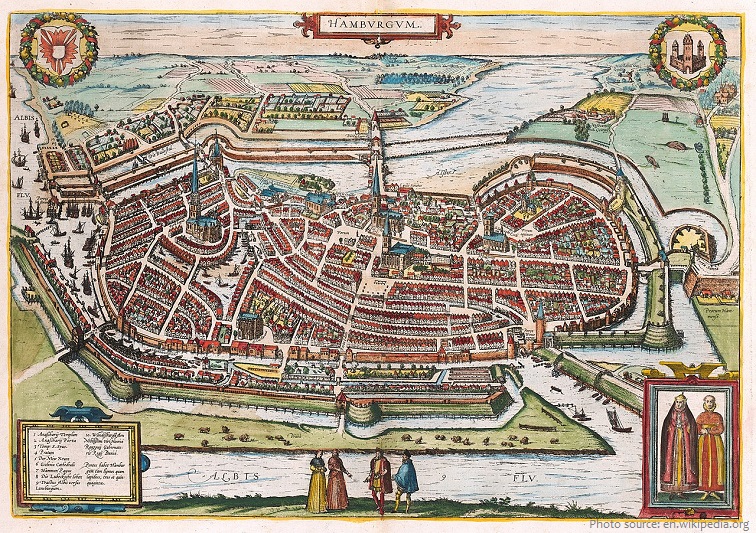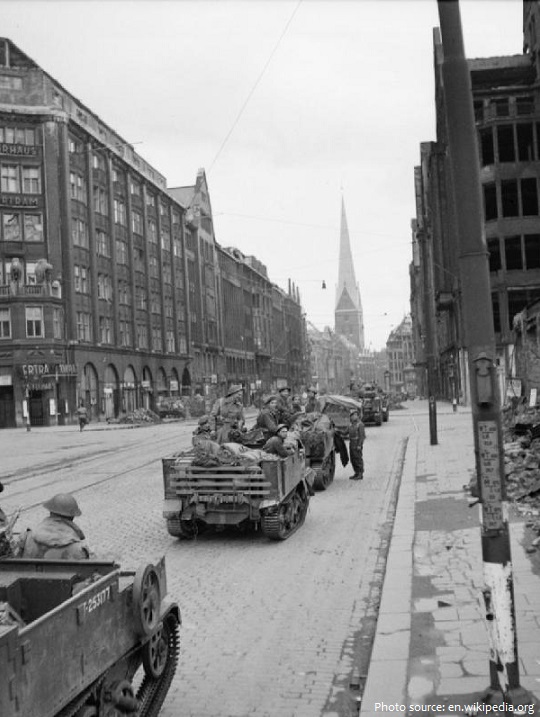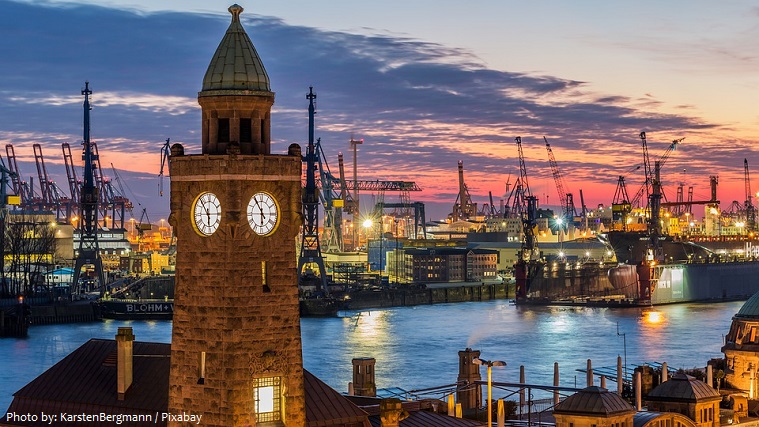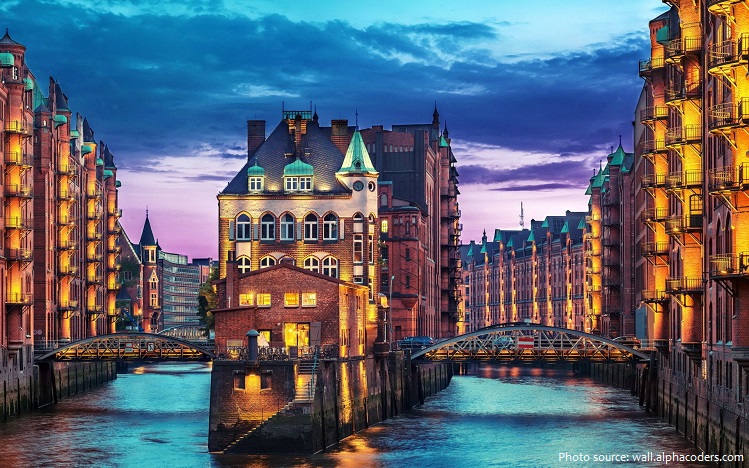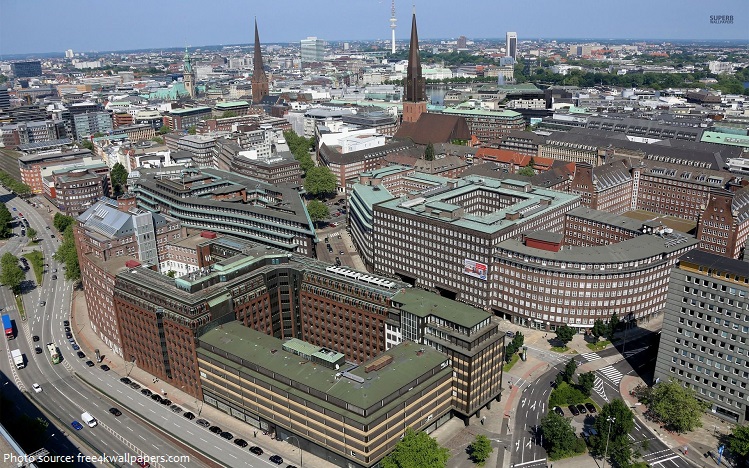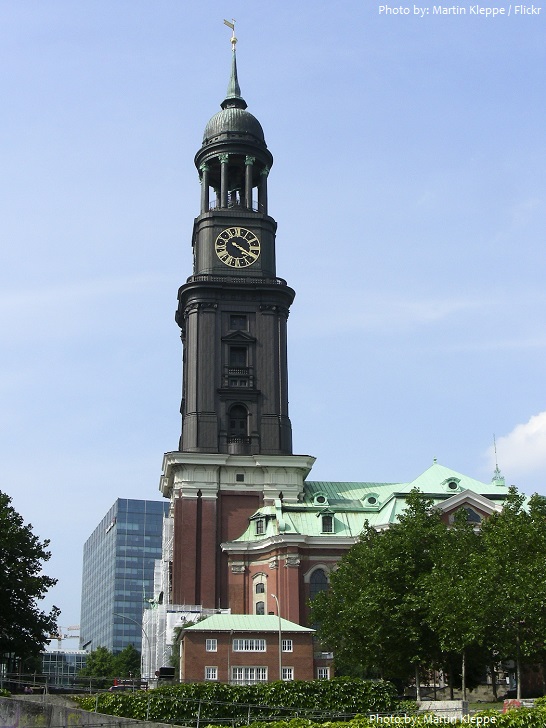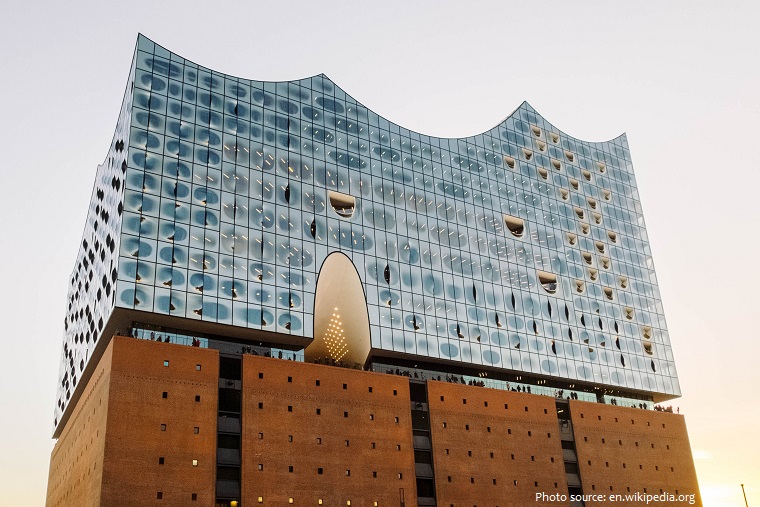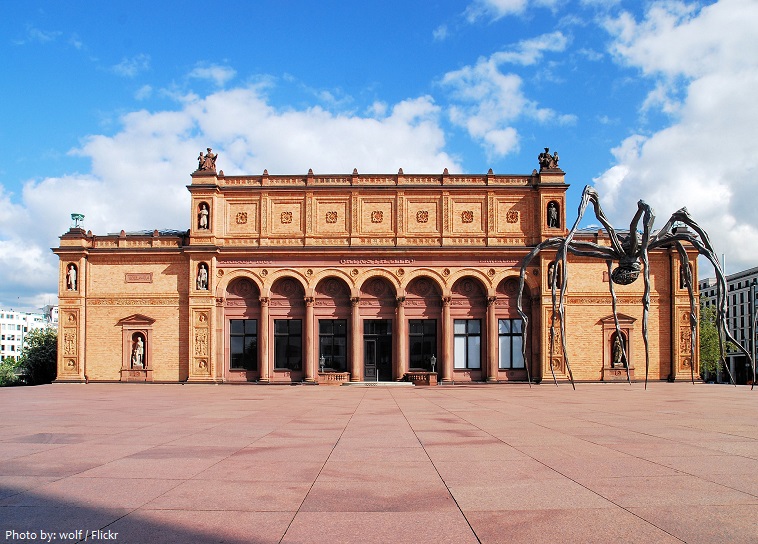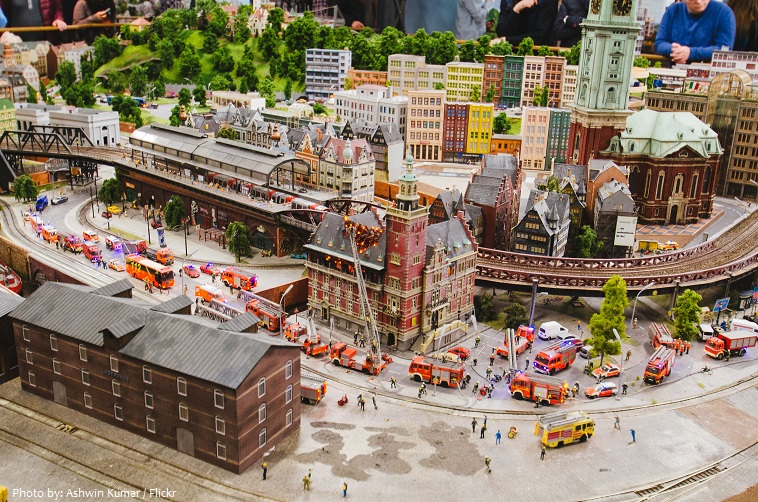Hamburg is the second-largest city in Germany (after Berlin).
The official name of the city is the Free and Hanseatic City of Hamburg.
It is located on the Elbe River in northern Germany.
As of November 2019, the population of Hamburg is about 1.9 million people. It is the 8th largest city in the European Union.
The city covers a total area of 755 square kilometers (292 square miles).
The average altitude is 8 meters (26 feet) above sea level.
The history of Hamburg begins with its foundation in the 9th century as a mission settlement to convert the Saxons.
Since the Middle Ages, Hamburg was an important trading center in Europe.
The convenient location of the port and its independence as a city and state for centuries strengthened this position.
The city was member in the medieval Hanseatic trading league and a free imperial city of the Holy Roman Empire.
From 1815 until 1866 Hamburg was an independent and sovereign state of the German Confederation, then the North German Confederation (1866–71), the German Empire (1871–1918) and during the period of the Weimar Republic (1918–33).
In Nazi Germany Hamburg was a city-state and a Gau from 1934 until 1945.
After the Second World War Hamburg was in the British Zone of Occupation and became a state in the western part of Germany in the Federal Republic of Germany (Since 1949).
Today, Hamburg’s cherished traditions, together with its thriving business and cultural life and the energy of its inhabitants, make it one of the most vibrant cities in the world.
The Port of Hamburg is a sea port on the river Elbe in Hamburg. It’s Germany’s largest port and is named the country’s “Gateway to the World” (Tor zur Welt). The port is almost as old as the history of Hamburg itself. Founded on 7 May 1189 by Frederick I for its strategic location, it has been Central Europe’s main port for centuries and enabled Hamburg to develop early into a leading city of trade with a rich and proud bourgeoisie.
The Speicherstadt in Hamburg is the largest warehouse district in the world where the buildings stand on timber-pile foundations, oak logs, in this particular case. It is located in the port of Hamburg—within the HafenCity quarter—and was built from 1883 to 1927. It was awarded the status of UNESCO World Heritage Site together with The Kontorhaus District on 5 July 2015.
The Kontorhaus District is the southeastern part of Altstadt, Hamburg. The streetscape is characterised by large office buildings in the style of brick expressionism of the early 20th century.
St. Michael’s Church, colloquially called Michel is one of Hamburg’s five Lutheran main churches and one of the most famous churches in the city. St. Michaelis is a landmark of the city and it is considered to be one of the finest Hanseatic Protestant baroque churches. The church is dedicated to the Archangel Michael. A large bronze statue, standing above the portal of the church shows the archangel conquering the devil.
The Elbphilharmonie popularly nicknamed Elphi is a concert hall in Hamburg. It is one of the largest and acoustically most advanced concert halls in the world. The new glassy construction resembles a hoisted sail, water wave, iceberg or quartz crystal; it sits on top of an old warehouse building (Kaispeicher A, built 1963) near the Speicherstadt. It is the tallest inhabited building in Hamburg, with a final height of 108 meters (354 feet).
The Hamburger Kunsthalle is an art museum in Hamburg. It is one of the largest museums in the country. The name ‘Kunsthalle’ indicates the museum’s history as an ‘art hall’ when founded in 1850. Today, the Kunsthalle houses one of the few art collections in Germany that covers seven centuries of European art, from the Middle Ages to the present day.
The Tierpark Hagenbeck is a zoo in Stellingen, a quarter in Hamburg. The collection began in 1863 with animals that belonged to Carl Hagenbeck Sr. (1810–1887), a fishmonger who became an amateur animal collector. The park itself was founded by Carl Hagenbeck Jr. in 1907. It is known for being the first zoo to use open enclosures surrounded by moats, rather than barred cages, to better approximate animals’ natural environments.
Miniatur Wunderland is a model railway and miniature airport attraction in Hamburg. It is the largest model railway system in the world and has, in fact, been voted the most popular tourist attraction in Germany. Miniatur Wunderland is located in the historic Speicherstadt district of the city.
Hamburg is a major European science, research, and education hub, with several universities and institutions.
The city was a major center for rock music in the early 1960s. The Beatles lived and played in Hamburg during a period from August 1960 to December 1962. They proved popular and gained local acclaim. Prior to the group’s initial recording and widespread fame, Hamburg provided residency and performing venues for the Beatles from 1960 to 1962.
While the inspiration for the hamburger did come from Hamburg, the sandwich concept was invented much later. In the 18th century, beef from German Hamburg cows was minced and combined with garlic, onions, salt and pepper, then formed into patties (without bread or a bun) to make Hamburg steaks. The Hamburger most likely first appeared in the 19th or early 20th century.

